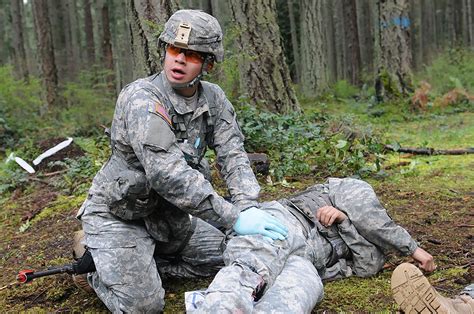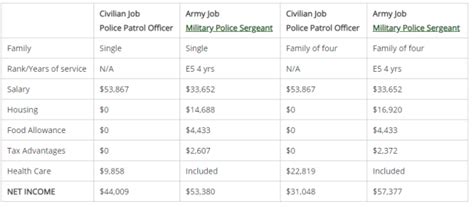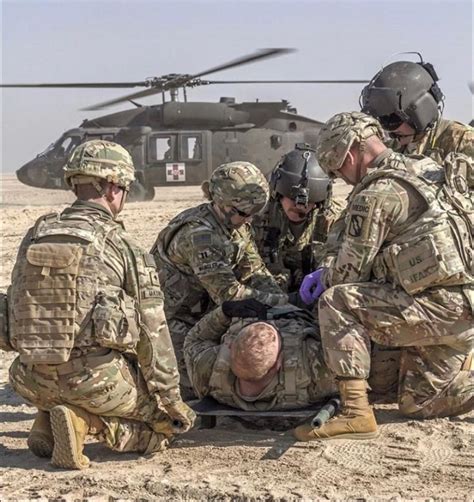Serving as a United States Army Medic is one of the most respected and challenging roles in the armed forces. These professionals, officially known as Combat Medic Specialists (MOS 68W), provide life-saving care on and off the battlefield. But beyond the call of duty, what does this career path look like financially?
This article provides a comprehensive guide to an Army Medic's compensation while in service and explores their significant earning potential in the civilian world as Paramedics and Emergency Medical Technicians (EMTs). While military pay is structured differently from a traditional salary, the skills and experience gained open the door to a stable and rewarding civilian career, where the median annual pay is approximately $53,180, with top earners exceeding $80,000 annually.
What Does an Army Medic Do?

An Army Combat Medic Specialist (68W) is the first line of medical care for soldiers in their unit. Their responsibilities are vast and critical, especially in high-stress environments. Key duties include:
- Administering emergency medical treatment to battlefield casualties.
- Providing initial care for injuries and illnesses.
- Preparing patients for evacuation to higher-level medical facilities.
- Assisting medical officers with patient care and clinical procedures.
- Training fellow soldiers in basic first aid and combat lifesaver skills.
The Advanced Individual Training (AIT) for a 68W is extensive, providing soldiers with the qualifications to take the National Registry of Emergency Medical Technicians (NREMT) exam, a crucial certification for a seamless transition to a civilian career.
Army Medic Compensation vs. Civilian Salary

It's important to understand that military members do not earn a "salary" in the traditional sense. Their compensation is a package composed of base pay, non-taxable allowances, and special pay. This is often significantly higher than just the base pay figure.
1. While Serving in the Army:
An Army Medic's pay is determined by their rank and years of service. Most medics start as a Private (E-1) and are typically promoted to Specialist (E-4) within a few years.
- Base Pay: According to the 2024 military pay charts from the Defense Finance and Accounting Service (DFAS), an E-4 with over 3 years of service earns a base pay of $2,917.50 per month ($35,010 annually).
- Allowances: This is where compensation significantly increases.
- Basic Allowance for Housing (BAH): A non-taxable allowance to cover housing costs, which varies by location and dependent status. For an E-4 with dependents in Fort Liberty (formerly Fort Bragg), NC, this could be $1,560 per month.
- Basic Allowance for Subsistence (BAS): A non-taxable allowance for food, which is $460.25 per month for enlisted personnel in 2024.
- Special Pay: Medics may also be eligible for additional pay, such as Hazardous Duty Pay or special assignment bonuses.
Combining these, a Specialist (E-4) with dependents could have a total compensation package well over $55,000 per year, much of which is tax-free.
2. As a Civilian Paramedic/EMT:
After transitioning from the military, former medics often work as Paramedics or EMTs. The U.S. Bureau of Labor Statistics (BLS) reports the median annual wage for EMTs and Paramedics was $53,180 in May 2023.
Salary ranges can be broad, reflecting differences in certification, experience, and location:
- Entry-Level (Bottom 10%): Approximately $37,390 per year.
- Senior/Top-Level (Top 10%): Over $80,660 per year.
Data from Salary.com shows the average Paramedic salary in the U.S. is around $52,101, but the typical range falls between $46,888 and $58,416.
Key Factors That Influence Civilian Salary

The post-military earnings of a former Army Medic are not static. Several key factors directly influence salary potential in the civilian sector.
### Level of Education and Certification
This is the single most significant factor. The 68W training provides the foundation for an NREMT certification, which is the baseline. Advancing your certification dramatically increases earning potential.
- EMT-Basic (EMT-B): The foundational level, often leading to lower-paying roles.
- Advanced EMT (AEMT): Includes more advanced skills like IV therapy and some medication administration.
- Paramedic (NRP): This is the highest level of pre-hospital certification, typically requiring an associate's degree. Paramedics have a much wider scope of practice and command significantly higher salaries. Former medics can often use their GI Bill benefits to complete a paramedic program.
### Years of Experience
Experience gained in the Army is highly respected in the civilian world. The ability to perform under extreme pressure is a soft skill that employers value immensely. In the civilian sector, salary progression follows a clear path:
- Entry-Level (0-2 years): Often starts at the lower end of the pay scale.
- Mid-Career (3-9 years): Demonstrates proven skill and reliability, leading to higher pay and potential for supervisory roles.
- Senior/Lead Paramedic (10+ years): Experienced professionals can move into leadership, training, or management positions, which come with the highest salaries in the field.
### Geographic Location
Where you work matters. Wages for paramedics and EMTs vary significantly by state and metropolitan area, often due to demand and cost of living. According to the BLS, some of the top-paying states for this profession are:
- Hawaii: $85,020 (mean annual wage)
- Washington: $82,410
- California: $69,330
- Oregon: $66,690
- Alaska: $66,130
Working in a major metropolitan area, even in a lower-paying state, will typically offer a higher salary than a rural position.
### Employer Type
The type of organization you work for has a major impact on both salary and benefits.
- Government/Municipal Agencies (e.g., Fire Departments): These are often the highest-paying employers. They typically offer competitive, union-negotiated wages, excellent benefits, and strong pension plans.
- Hospitals: Hospital-based paramedic roles, including those in the emergency department, offer competitive pay and integration with a larger healthcare system.
- Private Ambulance Services: While essential to the EMS system, these companies can sometimes offer lower starting salaries compared to government agencies.
- Industrial or Corporate Settings: Large industrial sites, oil rigs, or remote construction projects often hire on-site paramedics, offering high pay due to the specialized and isolated nature of the work.
### Area of Specialization
Just as in other medical fields, specialization can lead to higher earnings. Former Army Medics are uniquely positioned for several of these roles.
- Flight Paramedic (Critical Care): Requires extensive additional training in critical care transport. These professionals work on helicopters or fixed-wing aircraft and earn a premium salary.
- Tactical Paramedic (SWAT Medic): This role directly leverages military experience. Tactical paramedics embed with law enforcement special operations teams and require specialized training and physical fitness.
- Community Paramedicine: A growing field where paramedics work to provide preventative care and health management to underserved populations, often commanding higher and more stable salaries.
Job Outlook

The future is bright for those pursuing this career. The U.S. Bureau of Labor Statistics projects that employment for EMTs and Paramedics will grow by 5% from 2022 to 2032, which is faster than the average for all occupations.
This growth is driven by the needs of an aging baby-boomer population and an increase in medical emergencies such as heart attacks and strokes. This steady demand ensures a high degree of job security for qualified professionals.
Conclusion

A career as an Army Medic is a path of service, skill, and sacrifice. The compensation structure in the military provides a stable financial foundation through a package of pay and tax-free allowances.
More importantly, the world-class training and unparalleled experience create a direct and powerful launchpad into a successful civilian career. By leveraging their military background and pursuing higher certifications, former medics can build a rewarding and financially secure future as paramedics. The key takeaways for anyone considering this path are:
- Military compensation is a complete package, not just base pay.
- Civilian success is tied to advancing your certification from EMT to Paramedic.
- Your military experience is a valuable asset that civilian employers actively seek.
- Location, employer, and specialization are the primary levers for maximizing your post-military earning potential.
For those with a passion for medicine and a desire to serve, the journey from Army Medic to civilian Paramedic offers both a noble calling and a stable, in-demand profession.
